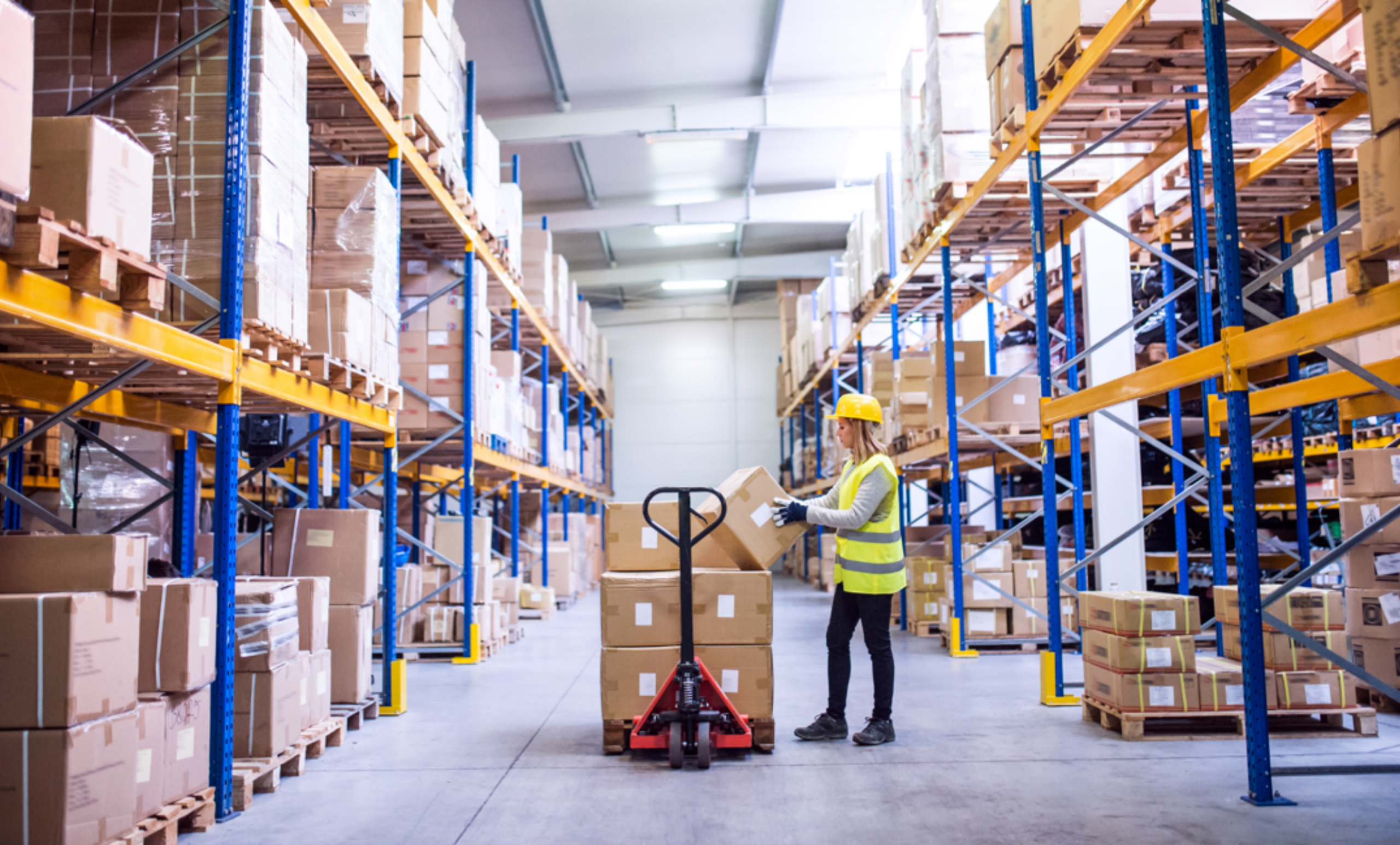Streamlining Your Warehouse Packing Operation: Resolving Bottlenecks

Amid peak, many businesses across the country (and the world) will be busy trying to cope with increased demand. If you’ve worked in a warehouse during this time of year, you’ll know it can be a challenging time. How efficiently your warehouse operates can be critical to your business’ success – whatever the time of year.
Increased demand presents both challenges and opportunities. It can often highlight what works well and what doesn’t in a bustling warehouse environment. As we work through peak and look ahead to 2024, it’s a good time to reflect on bottlenecks in your operation.
In this article, we’ll look at the ways you can identify bottlenecks and common challenges in packing areas. We’ll also discuss solutions to streamline your warehouse packing operation and how you can improve your warehouse productivity.
- 1.
- 2.
- 3.
- 4.

Ways to identify bottlenecks in your warehouse
There are lots of ways you can identify pressure points in your warehouse. Here are some key metrics to review if you’re looking to improve warehouse efficiency:
- Picking accuracy – miss-picks can be a sign that something isn’t working or that capacity is being outstripped by demand.
- Packing times – have packing times met targets? Are packers taking longer to process orders? During high-pressure times, packing times can be a bottleneck if processes aren’t efficient and packing materials aren’t easy
- Dispatch lead times – do your dispatch lead times keep increasing and getting longer? This can be in response to high demand, but it can also suggest that processes need to change/
- Damages – are customers reporting an increase in damages? This can be an indicator that packing isn’t being completed properly or that the packing materials being used aren’t sufficient.
Ultimately, you want to try and avoid bottlenecks because they can all impact how cost-effectively you’re running your warehouse AND impact your customer. In fact, almost 40% of consumers report that the risk of goods not being delivered on time prevents them from shopping online!

Common indicators of packing bottlenecks
So, what are some common indicators packing bottlenecks? Here are some examples that you should watch out for:
Untidy Pick Areas
One common bottleneck in packing operations is untidy pick areas. Disorderly shelves and misplaced items can lead to inefficiencies. As your team spend extra time searching for the right products and packaging materials their productivity decreases and their packing downtime increases – not ideal when you’re busy. This not only slows down the packing process but also increases the risk of errors.
Slow Goods Out and Dispatch
Another issue often encountered is the delay in goods going out for dispatch. This has a knock-on effect on your customers, as it could delay delivery timescales.
Slow dispatch times can be caused by various factors, such as insufficient manpower, inefficient packing processes, or inadequate packaging materials. In addition, your warehouse layout could also play a part in this. Where your products and packaging are stored, as well as where key processes happen will affect overall warehouse movement.
Running out of Packaging Supplies
Have you ever run out of packaging during a crucial time? This can be a big bottleneck and bring your packing area to a halt, significantly hindering efficiency.
This not only disrupts the workflow but also leads to delays in fulfilling orders. Not what you need when you’re busy. This can be caused by several things, including incorrect forecasting, inefficient stock takes, or not placing packaging orders in advance of busy times.

Solutions to streamline your warehouse packing operation
If you’re experiencing any of these bottlenecks, don’t worry. There are lots of solutions you can put in place to improve productivity and streamline your packing operation.
Regularly Reviewing Packing Processes
Regularly reviewing your processes is crucial. You should be considering what works well and what doesn’t at least every quarter. If there have also been any significant changes – such as hiring lots of new staff – you may want to review processes then too. Fresh eyes can give you new perspectives or highlight where current processes might be challenging.
In addition to the metrics we mentioned earlier in this article, you may also want to review KPIs like backorder rates, return rates, warehouse capacity and stock levels / continuity of supply of your packaging.
Introducing Packaging Automation
Embracing packaging automation in your packing process can significantly reduce bottlenecks.
Packaging machinery can efficiently help you pick, pack, label and move orders throughout your warehouse. There are lots of different packaging automations available. If you’re a smaller business, there are low scale options like desktop gummed paper tape machines, through to robotic picking, conveyors and case erectors for high-demand environments (and everything in between)
Benefits of implementing automation include significant productivity improvements, as well as waste reduction and improved sustainability. Learn more here.
Optimising Packaging Materials
Not all packaging is made equal. Selecting the right packaging designs and material can make a substantial difference in how efficient your packing operation is. Having a concise, well-designed range of packing materials will enable you to pack and dispatch them quickly and effectively. It will also enable you to protect them more effectively and generate cost-savings throughout your operation.
Consider the cardboard boxes you use. Are they easy to assemble? If not, that could be a bottleneck.
If you’re wrapping pallets, do you know how much film you’re using to wrap a shipment? Is it more than you need?
If optimising your packing materials is a concern for you, check out our Packaging Optimiser. It can show you the impact your materials and processes have on your business and the environment.
Clever Packaging Swaps
In some instances, your processes might be working well, so how can you squeeze some extra efficiency out of your packing operation?
Implementing some clever packaging swaps could be key. For example, could you use longer rolls of void fill, packing tape or paper cushioning? This could reduce your downtime for roll changes and free up storage space. If you’re not using hoppers, you could introduce them and pre-fill them with key packaging materials, so your team will have what they need, when they need it, without leaving the packing area.
Considering Redesigning Packing Areas
The layout and organization of your packing area play a significant role in efficiency. Is your warehouse laid out as effectively as possible?
If not, consider rearranging shelves, workstations, and storage areas to create a more streamlined and ergonomic workspace for your packing team. Even keeping packaging materials in the “power zone” (no higher than shoulder height) on pack benches and minimising twisting can lead to efficiencies.

Support enhancing your packing productivity
Streamlining your packing operation is crucial for meeting the demands of peak season and beyond! If you need support improving your packing productivity and streamlining your warehouse, Macfarlane Packaging is here to help.
With a wide range of high-quality packaging materials, market-leading tools and e-trading systems, and expert advice, we are here to support your business in achieving seamless packing operations. Contact us today to learn more.
